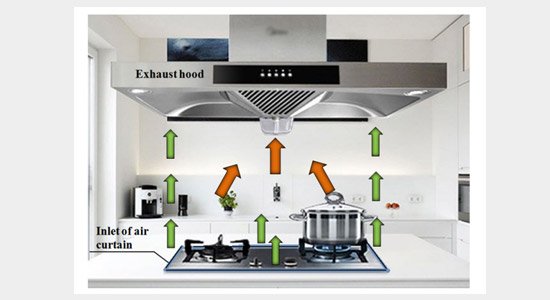In any commercial or industrial space, effective ventilation is a cornerstone of health, safety, and productivity. Yet while much attention is paid to the type and size of ventilation systems, one crucial factor often gets overlooked—placement. Where and how an exhaust fan is installed can significantly impact its ability to remove stale air, control humidity, and maintain air circulation. In addition to decreasing system efficiency, improper placement can result in higher energy expenses and worse indoor air quality.
Understanding the science behind airflow and pressure differentials is key to designing a system that works in harmony with your space. Whether you’re running a commercial kitchen, manufacturing plant, or warehouse, thoughtful positioning of ventilation equipment can make all the difference. Properly positioned exhaust fans enhance ventilation by swiftly directing airborne contaminants out of the facility before they have a chance to spread or settle.
The Basics Of Air Movement
Ventilation works on the principle of drawing out polluted or hot air and replacing it with clean, cooler air from another source. This process relies heavily on air pressure differences. If a fan is placed in the wrong location, it may create turbulence, draw in the wrong kind of air, or even circulate contaminants back into the space.
Strategic placement helps guide air in a specific, controlled direction. It prevents the formation of stagnant zones where air becomes trapped and ensures that fresh air reaches all corners of the building. Without this level of control, even the most powerful ventilation system can struggle to deliver consistent performance.
Matching Placement To Pollutant Sources
One of the primary functions of a ventilation system is to capture and remove harmful particles or fumes. In environments where activities generate smoke, dust, or chemical vapours, placing the extraction point directly near the source is essential.
For example, in a metalworking shop, locating the fan near welding stations allows contaminants to be removed before they spread. In a commercial kitchen, installing it directly above the cooking line ensures that grease-laden steam is pulled out immediately, rather than settling on walls or ceilings.
When equipment is too far from the source of emissions, the system has to work harder, and contaminants may linger longer than they should. This can compromise worker health, increase cleaning costs, and lead to regulatory issues if standards aren’t met.
Accounting For Space And Structure
Every facility has its own unique layout and architectural features. Elements like ceiling height, wall angles, and obstructions (such as beams, shelves, or machinery) all affect how air flows through the space. Placing ventilation in open areas with unobstructed paths to outside vents or ducts allows for more effective extraction.
Ceiling-mounted units are generally more efficient in spaces with high ceilings, while wall-mounted or inline models may work better in lower or compartmentalised areas. In facilities with multiple rooms or zones, it may be necessary to install several units at strategic intervals to ensure full coverage.
Pairing Exhaust Systems With Air Intakes
One common mistake in ventilation planning is installing exhaust systems without considering where fresh air will come from. For optimal performance, airflow must be balanced—air removed from the space needs to be replaced. If replacement air is not properly planned, it can result in negative pressure, making doors harder to open, drawing in unfiltered air through cracks, or reducing the overall effectiveness of the system.
Locating fresh air intakes opposite the exhaust system creates a natural cross-flow. This directional flow helps flush out stale air and ensures new air moves efficiently through the space, rather than simply cycling around the same area.
The Cost Of Poor Placement
When systems are improperly located, facilities may face a range of issues, from overheating and poor odour control to frequent equipment breakdowns due to recirculated contaminants. Additionally, systems that must work harder to compensate for poor placement tend to consume more energy, increasing operating costs over time.
In severe cases, poor air quality can lead to employee health complaints, failed inspections, or damaged products—issues that could have been avoided with proper planning.
Final Thoughts
The effectiveness of exhaust fans depends not just on their power or brand but largely on their positioning within the facility. Businesses can lower energy costs, increase ventilation efficiency, and guarantee a healthier, more productive atmosphere for all occupants by concentrating on careful, strategic placement.

